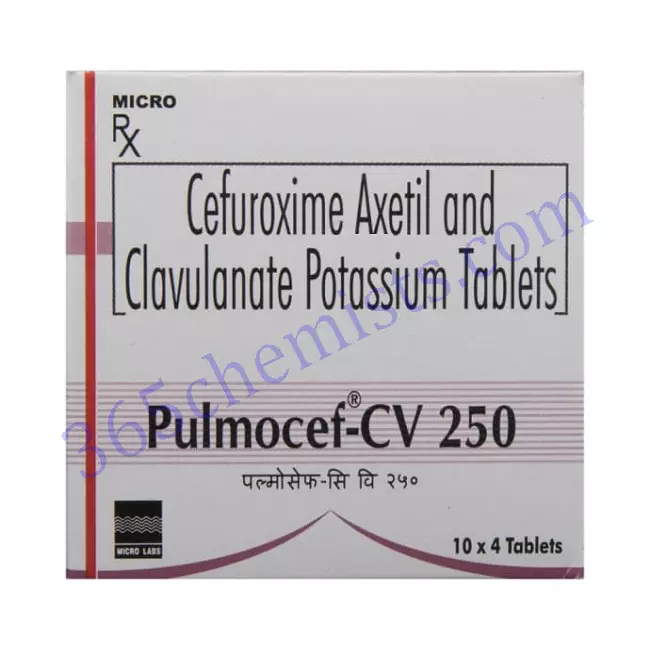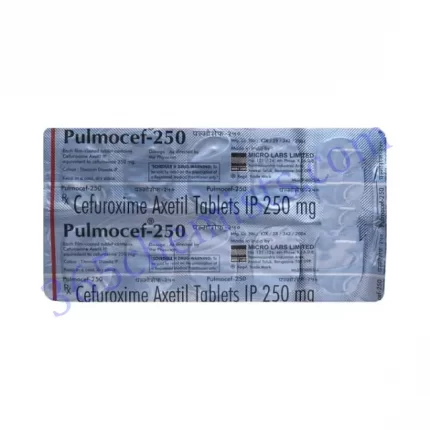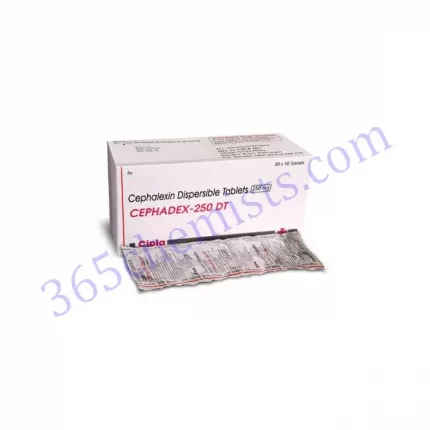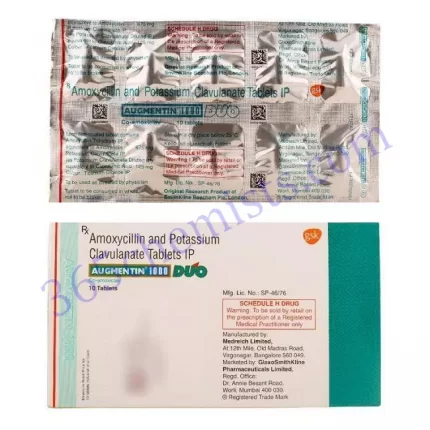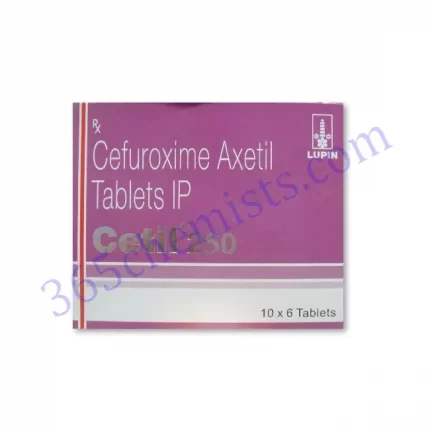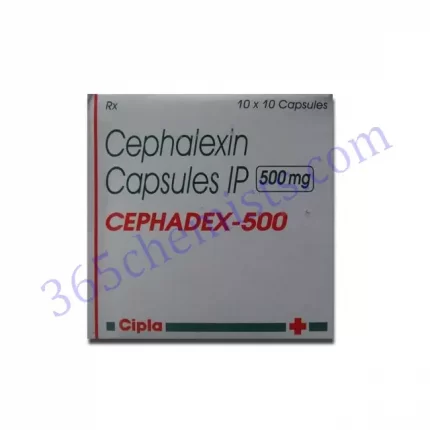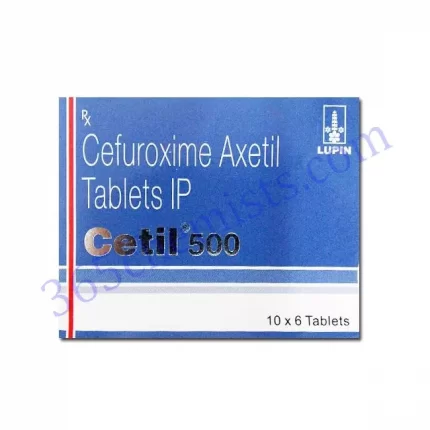Pulmocef CV Tablet (Cefuroxime 250mg/Clavulanic Acid 125mg)
Pulmocef CV Tablet is a combination medication that contains the active ingredients Cefuroxime 250 mg and Clavulanic Acid 125 mg. This medication is intended to treat a wide variety of bacterial infections. It is classified as a member of the group of antibiotics known as cephalosporins, and its active ingredient, clavulanic acid, is a beta-lactamase inhibitor. The purpose of this in-depth article is to provide a detailed description of Pulmocef CV Tablet, including its uses, dosage, side effects, precautions, and other relevant information.
Uses of Pulmocef CV Tablet
The Pulmocef CV Tablet is most commonly utilised in the treatment of a wide variety of bacterial infections brought on by organisms that are susceptible to the medication’s effects. It is effective against a wide variety of infections that can occur in the respiratory system, such as bronchitis, pneumonia, and sinusitis. In addition to this, it is employed in the treatment of infections of the skin and soft tissues, infections of the urinary tract, and certain sexually transmitted infections. Cefuroxime’s effectiveness as an antibiotic is increased when taken in conjunction with clavulanic acid because this combination blocks the enzymes produced by bacteria that are responsible for breaking down cefuroxime.
Dosage and Administration
It is possible for the recommended dosage of Pulmocef CV Tablet to change depending not only on the nature and extent of the infection, but also on the age of the patient and their general state of health. It is essential to carefully adhere to the dosage instructions provided by a medical professional or those listed on the packaging of the medication that you have been prescribed. One tablet containing 250 milligrammes of cefuroxime and 125 milligrammes of clavulanic acid should be taken twice daily by adults, as a general rule. The length of treatment is determined by a number of factors, including how well the patient responds to treatment and how severe the infection is. It is essential to take all of the prescribed medication for the full duration of the course.
Related product
Pulmocef 250 Tablet
Pulmocef CV 250mg Tablet
Pulmocef CV 500mg Tablet
Possible Side Effects
Pulmocef CV Tablet, like any other medication, carries with it the potential to cause side effects in some patients. These adverse effects can range from mild to severe and may include the following:
- Pulmocef CV Tablet is known to cause gastrointestinal side effects such as nausea, vomiting, stomach pain, diarrhoea, and loss of appetite. These symptoms are common in patients who take the medication. These adverse effects are typically mild and fleeting in nature. It is recommended that the medication be taken with food in order to lessen the severity of these effects.
- Allergic reactions: Although it is extremely unlikely, some people might have an allergic reaction to cefuroxime or clavulanic acid. Symptoms of an allergic reaction include a rash, itching, swelling of the face, lips, or throat, and difficulty breathing. If you experience any of these symptoms, you need to seek medical attention as soon as possible.
- While taking Pulmocef CV Tablet, some people may experience headaches that range from mild to moderate in intensity, as well as dizziness. Headaches and dizziness may also occur together. In most cases, these negative effects are only temporary and will go away on their own.
- Alterations in taste, vaginal yeast infections, and an increase in liver enzymes are some of the other side effects that may occur, although they are less common. It is imperative that you speak with a medical professional in the event that any of these unwanted effects continue or become worse.
Precautions and Warnings
Before beginning treatment with Pulmocef CV Tablet, it is essential to communicate any preexisting medical conditions, allergies, or medications that are currently being taken to the attending medical professional. This information will assist the physician in making an educated decision that will guarantee the treatment’s safety as well as its effectiveness.
The following is a list of some of the most important precautions and warnings associated with the use of Pulmocef CV Tablet:
- Allergic reactions: People who have a history of being allergic to cephalosporin antibiotics or any of the components that are found in Pulmocef CV Tablet should steer clear of using the medication.
- Patients with impaired kidney function may need to have their dosage adjusted based on the levels of creatinine clearance in their blood. During treatment, it is essential to perform vigilant monitoring of kidney function.
- A superinfection is an infection that develops despite the use of antibiotics, including Pulmocef CV Tablet, for an extended period of time. Superinfections are typically brought on by resistant organisms. In the event that a secondary infection develops, the appropriate actions need to be taken.
- Interactions with other medications There is a possibility of an interaction between Pulmocef CV Tablet and other medications, such as probenecid and anticoagulants. Before beginning treatment with Pulmocef CV Tablet, it is essential to provide the healthcare professional with a complete list of all medications, supplements, and herbal products currently being taken.
Conclusion
Antibiotic combinations like the one found in the Pulmocef CV Tablet (Cefuroxime 250 mg/Clavulanic Acid 125 mg), which are used to treat bacterial infections, are called synergists. Because of its broad-spectrum activity and the synergy that exists between cefuroxime and clavulanic acid, it is an excellent option for treating a variety of infections that affect the respiratory and urinary tracts. However, it is essential to make sure to take this medication exactly as directed, adhere to the dosage that is recommended, and pay attention to all of the precautions and warnings. Maintaining open lines of communication with one’s healthcare team and closely monitoring one’s response to treatment will both maximise the likelihood of favourable outcomes and reduce the likelihood of unwanted effects.

